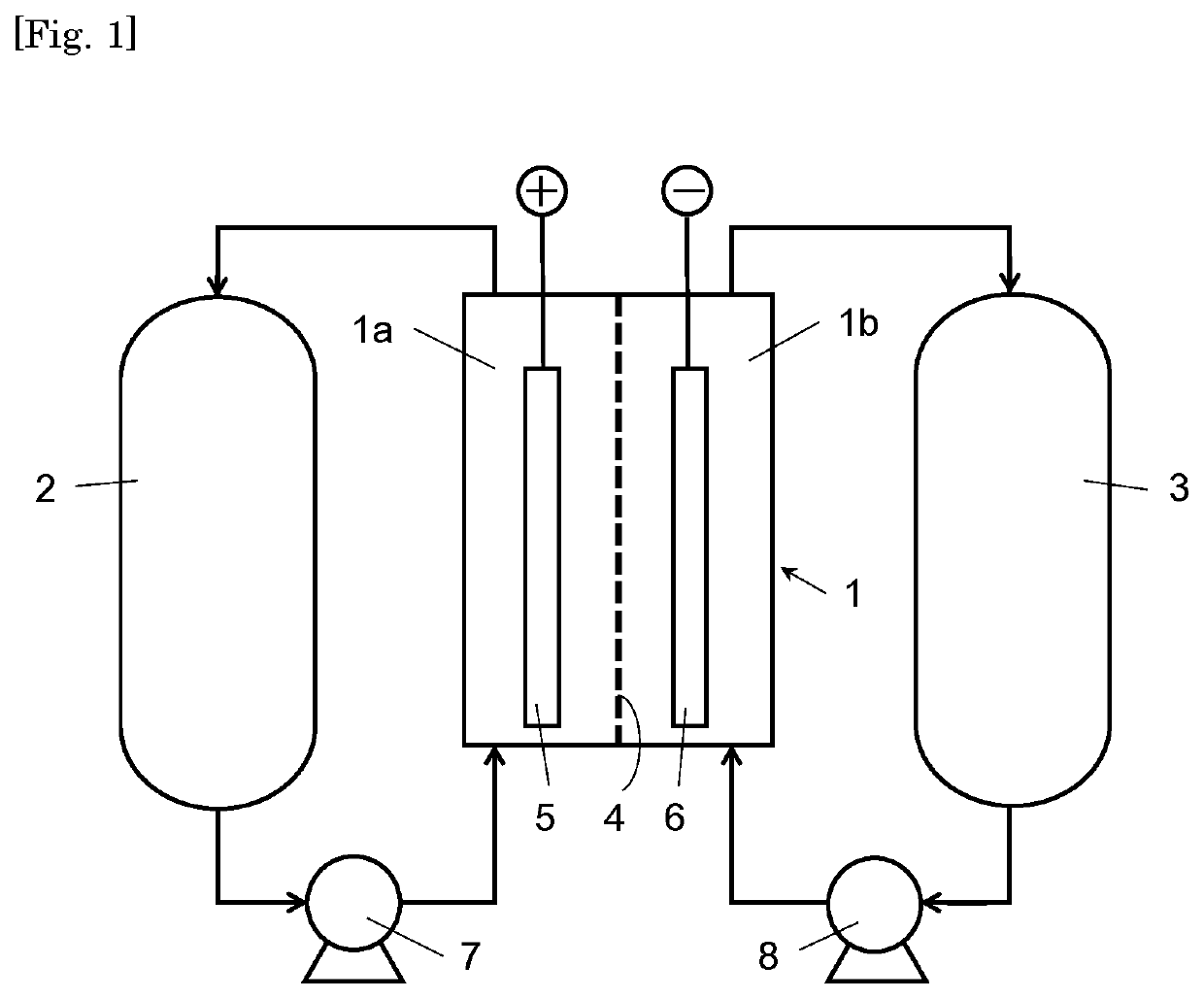Carbon catalyst for redox flow battery electrodes
a technology catalyst, which is applied in the direction of physical/chemical process catalyst, cell component, electrochemical generator, etc., can solve the problems of redox flow battery having a lower energy density than other storage batteries, wind power generation and photovoltaic power generation, etc., and achieves good charge-discharge cycle characteristics, facilitate electrode reactions, and excellent durability
- Summary
- Abstract
- Description
- Claims
- Application Information
AI Technical Summary
Benefits of technology
Problems solved by technology
Method used
Image
Examples
example 1
[0070]A four-necked flask was charged with 30.93 g of acrylonitrile (available from Wako Pure Chemical Industries, Ltd.), 4.07 g of methacrylic acid (available from Wako Pure Chemical Industries, Ltd.), and 300 mL of pure water, and the contents of the flask were bubbled with nitrogen gas for 15 minutes. This flask was heated in an oil bath at 70° C., and a solution of 100 mg of potassium peroxodisulfate (available from Wako Pure Chemical Industries, Ltd.) dissolved in 50 ml of pure water was added into the flask, the contents of which were stirred in a nitrogen gas atmosphere to allow polymerization to proceed for 4 hours. After leaving to cool, the resulting milky white solution was concentrated, and the concentrate was vacuum-dried at 60° C. to obtain about 20 g of polyacrylonitrile-polymethacrylic acid copolymer (PAN-PMA).
[0071]1.0 g of PAN-PMA obtained above was dissolved in 15 g of N,N-dimethylformamide to prepare a solution A. Additionally, 1.0 g of 2-methylimidazole and 5.78...
example 2
[0079]0.5 g of the carbon catalyst produced in Example 1, 20 mL of a 4 mol / L aqueous sulfuric acid solution, and a stirrer bar were placed in a 100-mL eggplant flask equipped with a cooling tube, and the contents of the flask were heated under reflux using an oil bath at 85° C. for 14 days while the contents were stirred. This was followed by natural cooling and then filtration, after which cycles of washing with distilled water and filtration were repeated. After the filtrate was confirmed to be neutral with pH paper, the filtration residue was dried with a reduced-pressure dryer (5000 Pa) at 60° C. overnight.
[0080]The dried filtration residue was crushed with a mortar to a particle size of about 1 μm or less, giving a surface-treated carbon catalyst.
examples 3 to 5
[0081]Surface-treated carbon catalysts were obtained in the same manner as in Example 2, except that the temperature and time for heating under reflux were changed to those shown in Table 1 below.
PUM
| Property | Measurement | Unit |
|---|---|---|
| aspect ratio | aaaaa | aaaaa |
| aspect ratio | aaaaa | aaaaa |
| temperature | aaaaa | aaaaa |
Abstract
Description
Claims
Application Information
 Login to View More
Login to View More - R&D
- Intellectual Property
- Life Sciences
- Materials
- Tech Scout
- Unparalleled Data Quality
- Higher Quality Content
- 60% Fewer Hallucinations
Browse by: Latest US Patents, China's latest patents, Technical Efficacy Thesaurus, Application Domain, Technology Topic, Popular Technical Reports.
© 2025 PatSnap. All rights reserved.Legal|Privacy policy|Modern Slavery Act Transparency Statement|Sitemap|About US| Contact US: help@patsnap.com

